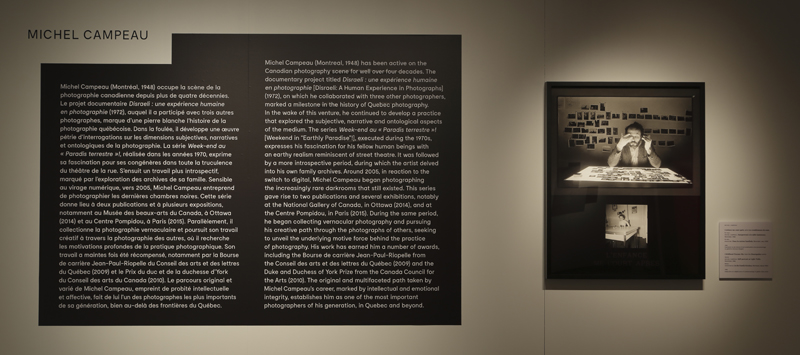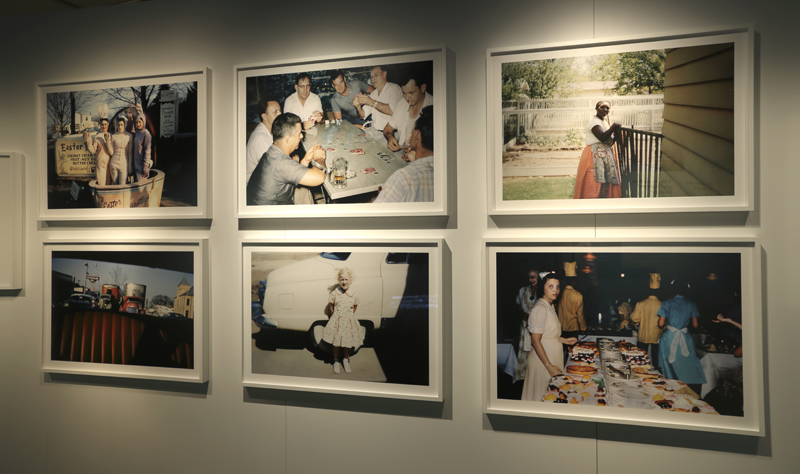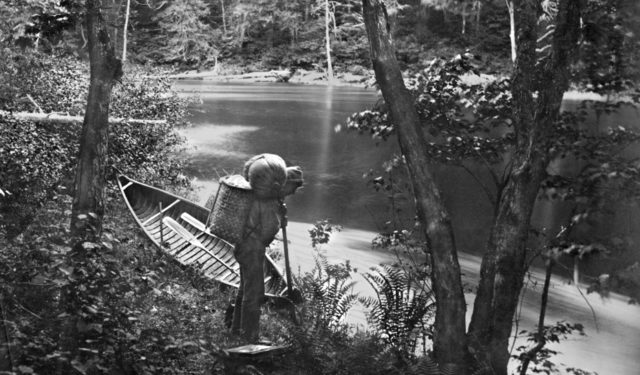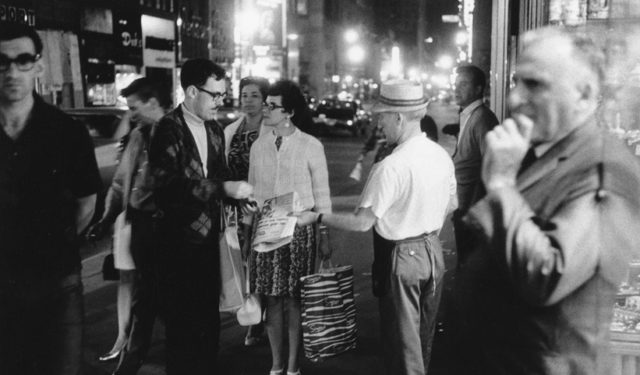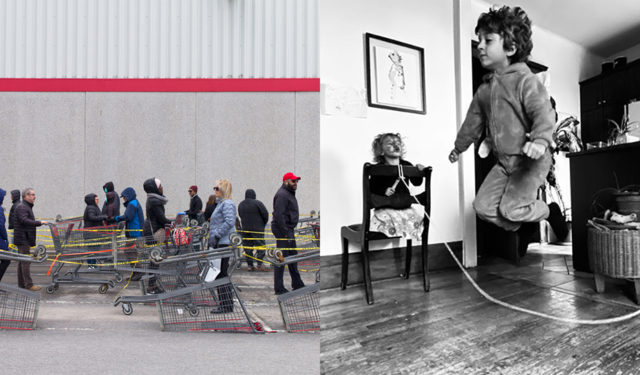Michel Campeau – A Confluence of Exhibition and Collection
Michel Campeau: Life Before Digital can be understood in myriad ways: as autobiography and as a look at the legacy of analogue photography.
The exhibition Michel Campeau: Life Before Digital can be understood in myriad ways. Firstly, it explicitly asks visitors to reflect on the aesthetic legacy of analogue photography, focussing on the work done in the darkroom through eight photographic series by artist Michel Campeau.
The subtext of this look at a bygone practice offers up a second interpretation, that of an autobiography of the artist, where the tone is set in the first piece of the exhibition. Two photographs of Campeau are displayed within a single frame: one of the photographer at his light table, examining slides, the other depicting the little boy he was, playing with his collection of figurines. The title: Childhood Pursues Me.
Throughout the exhibition, in reproductions of artefacts and found photographs, are references to his family, his photography tools, his library, the photographers who influenced him, and his emotional aspirations as reinvented in the personal photos of Rudolph Edse1.
A third aspect is the focus on amateur photography that comes through in the numerous found photos that the artist has appropriated and exhibited as if he had shot them himself. This interpretation reflects the McCord Museum’s photography collection. In the 1970s, under the administration of curator Stanley Triggs, the Museum began collecting vernacular photographs, that is, images of daily life with no artistic pretensions, taken by now anonymous amateur photographers. These photographs can notably be found in family albums full of snapshots taken after the Kodak revolution of 1888. Given the countless examples of these types of pictures, which are usually predictable or, even worse, boring, it is difficult to determine their place in the history of photographic art.
Since the late 1990s, influential museums like the San Francisco Museum of Modern Art and the Metropolitan Museum of Art in New York City2 have organized exhibitions of such collections, showing how these anonymous snapshots can sometimes fortuitously present the same characteristics found in the work of recognized photographers. Critics note that this approach tends to perpetuate the hagiographic model found in art history and highlights the vision of the curator or collector more than that of the photographer3.
The exhibition Life Before Digital does not present itself as an attempt to legitimize the artistic merit of snapshots. It is a composite work by Michel Campeau, who uses it to question the relevance of collecting these types of photographs, which have long been invisible in the history of the medium. The exhibition’s very location plays into this other possible interpretation.
The context of the McCord Museum creates a forum for bringing together two perspectives on snapshots. The Museum, through the curator, is trying to take into account all the different types of photography that could document the life of a society, while the artist sees the multitude of anonymous photographs as material for expressing his creativity and sensibilities. By mounting an exhibition, the Museum passes the baton to the artist, thus giving voice to a subjective and authentic look at a field represented in its collection. The Museum invites visitors to think about what these anonymous images represent in the artist’s creative process.
NOTES
1. Snapshots: The Photography of Everyday Life, 1888 to the Present, San Francisco Museum of Modern Art, 1998; Other Pictures: Anonymous photographs from the Thomas Walter Collection, New York: Metropolitan Museum of Art, 2000.
2. Among the numerous critiques, see Geoffrey Batchen, “Snapshots: Art history and the ethnographic turn,” Photographies, 2008, Vol. 1, No. 2, 121–142; Sarah Greenough and Diane Waggoner, The Art of the American Snapshot 1888–1978, Washington: National Gallery of Art, 2007.
3. See the book published in conjunction with the exhibition: Michel Campeau, Rudolph Edse: Une autobiographie réinventée/An Unintentional Autobiography, Paris; Montreal: Les éditions Loco; McCord Museum, 2017.

